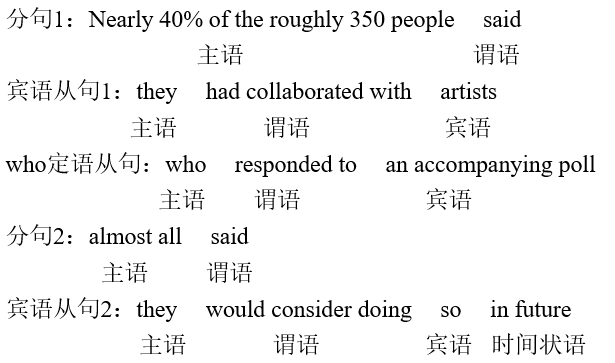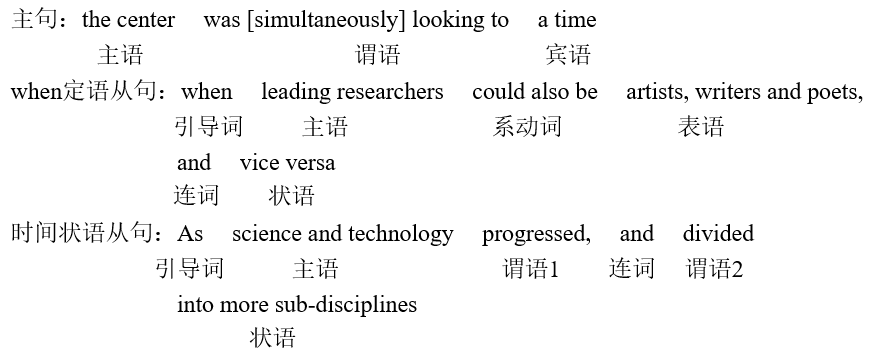Enlightening, challenging, stimulating, fun. These were some of the words that Nature readers used to describe their experience of art-science collaborations in a series of articles on partnerships between artists and researchers. Nearly 40% of the roughly 350 people who responded to an accompanying poll said, they had collaborated with artists, and almost all said they would consider doing so in future.
Such an encouraging results is not surprising. Scientists are increasingly seeking out visual artists to help them communicate their work to new audiences. “Artists help scientists reach a broader audience and make emotional connections that enhance learning.” One respondent said.
One example of how artists and scientists have together rocked the scenes came last month when the Sydney Symphony Orchestra performed a reworked version of Antonio Vivaldi’s The Four Seasons. They reimagined the 300-year-old score by injecting the latest climate prediction data for each season—provided by Monash University’s Climate Change Communication Research Hub. The performance was a creative call to action ahead of November’s United Nations Climate Change Conference in Glasgow, UK.
But a genuine partnership must be a two-way street. Fewer artists than scientists responded to the Nature poll, however, several respondents noted that artists do not simply assist scientists with their communication requirements. Nor should their work be considered only as an object of study. The alliances are most valuable when scientists and artists have a shared stake in a project, are able to jointly design it and can critique each other’s work. Such an approach can both prompt new research as well as result in powerful art.
More than half a century ago, the Massachusetts Institute of Technology (MIT) opened its Center for Advanced Visual Studies (CAVS) to explore the role of technology in culture. The founders deliberately focused their projects around light—hence the “visual studies” in the name. Light was a something that both artists and scientists had an interest in and therefore could form the basis of collaboration. As science and technology progressed, and divided into more sub-disciplines, the center was simultaneously looking to a time when leading researchers could also be artists, writers and poets, and vice versa.
Nature’s poll findings suggest that this trend is as strong as ever, but, to make a collaboration work both sides need to invest time and embrace surprise and challenge. The reach of art-science tie-ups needs to go beyond the necessary purpose of research communication, and participants must not fall into the trap of stereotyping each other. Artists and scientists alike are immersed in discovery and invention, and challenge and critique are core to both, too.
1. According to Paragraph 1, art-science collaborations have ________.
2. The reworked version of The Four Seasons is mentioned to show that ________.
3. Some artists seem to worry about in the art-science partnership ________.
4. What does the author say about CAVS?
5. In the last paragraph, the author holds that art-science collaborations ________.
问题1选项
A.caught the attention of critics
B.received favorable responses
C.promoted academic publishing
D.sparked heated public disputes
问题2选项
A.art can offer audiences easy access to science
B.science can help with the expression of emotions
C.public participation in science has a promising future
D.art is effective in facilitating scientific innovations
问题3选项
A.their role may be underestimated
B.their reputation may be impaired
C.their creativity may be inhibited
D.their work may be misguided
问题4选项
A.It was headed alternately by artists and scientists.
B.It exemplified valuable art-science alliances.
C.Its projects aimed at advancing visual studies.
D.Its founders sought to raise the status of artists.
问题5选项
A.are likely to go beyond public expectations
B.will intensify interdisciplinary competition
C.should do more than communicating science
D.are becoming more popular than before
第1题:B
第2题:A
第3题:A
第4题:B
第5题:C
第1题:
【整体分析】
来源:Nature(《自然》)杂志于2021年2月24日刊登的文章Collaborations With Artists Go Beyond Communicating the Science(与艺术家的合作超越了科学交流)。
主题:文章主要探讨了艺术与科学合作的价值和重要性,以及这种合作关系对科学家和艺术家的好处,指出这些合作在加强交流和学习方面的潜力,还强调了双向合作的重要性,以及双方都需要投入时间和接受挑战,使合作获得成功。
结构:

【选项释义】
According to Paragraph 1, art-science collaborations have ________. 根据第一段,艺术与科学的合作已经________。
A. caught the attention of critics A. 引起了评论家的注意
B. received favorable responses B. 得到了积极的回应
C. promoted academic publishing C. 促进了学术出版
D. sparked heated public disputes D. 引发了激烈的公共争议
【考查点】事实细节题。
【解题思路】根据题干关键词Paragraph 1可以定位到文章第一段,本段首先说到“具有启发性、挑战性、刺激性和趣味性(Enlightening, challenging, stimulating, fun)。在一系列关于艺术家和研究人员合作的文章中,《自然》杂志的读者用这些词来描述他们在艺术与科学合作中的经历(describe their experience of art-science collaborations)”,说明《自然》杂志的读者对于艺术与科学合作的态度是积极的,接着指出“几乎所有人都表示,他们未来会考虑继续合作(consider doing so in future)”,说明人们期望艺术与科学在未来会进一步合作。因此B选项“得到了积极的回应”正确。
【干扰项排除】
A选项“引起了评论家的注意”和C选项“促进了学术出版”在文中没有提及,属于无中生有;
D选项“引发了激烈的公共争议”,由“在接受调查的约350人中(350 people who responded)”可知,文章只针对参与了调查的这部分人,没有到达公共争议的程度,属于过度推断。
第2题:
【选项释义】
The reworked version of The Four Seasons is mentioned to show that ________. 提到《四季》的改编版是为了说明________。
A. art can offer audiences easy access to science A. 艺术可以让观众更好地接触科学
B. science can help with the expression of emotions B. 科学可以帮助情感表达
C. public participation in science has a promising future C. 公众参与科学有很好的前景
D. art is effective in facilitating scientific innovations D. 艺术在促进科学创新方面是有效的
【考查点】推理判断题。
【解题思路】根据题干关键词The Four Seasons可以定位到文章第三段第一句“上个月,悉尼交响乐团演出了安东尼奥·维瓦尔第的《四季》的重制版,这是艺术家和科学家共同打造震撼场面的一个例子(One example of how artists and scientists have together rocked the scenes)”,这一例子是为了论证上文说到的“艺术家帮助科学家接触到更广泛的观众(reach a broader audience),建立可以提升学识的情感联系(make emotional connections that enhance learning)”,由此可知《四季》的改编版这一例子说明了艺术有助于科学的传播。因此A选项“艺术可以让观众更好地接触科学”正确。
【干扰项排除】
B选项“科学可以帮助情感表达”,由“艺术家帮助科学家接触到更广泛的观众,建立可以提升学识的情感联系(make emotional connections that enhance learning)”可知,艺术可以帮助情感表达,而不是科学,属于张冠李戴;
C选项“公众参与科学有很好的前景”和D选项“艺术在促进科学创新方面是有效的”在文中没有提及,属于无中生有。
第3题:
【选项释义】
Some artists seem to worry about in the art-science partnership ________. 一些艺术家似乎担心在艺术与科学的合作中________。
A. their role may be underestimated A. 他们的作用可能被低估了
B. their reputation may be impaired B. 他们的声誉可能会受到损害
C. their creativity may be inhibited C. 他们的创造力可能会受到限制
D. their work may be misguided D. 他们的工作可能被误导
【考查点】推理判断题。
【解题思路】根据题干关键词Some artists seem to worry about可以定位到文章第四段第二、三句“一些受访者指出,艺术家不仅仅是帮助科学家满足他们的交流需求(artists do not simply assist scientists with their communication requirements)。他们的工作也不应仅仅被视为研究对象(be considered only as an object of study)”,说明一些艺术家担心的是他们只能在合作中起到辅助科学家的作用。因此A选项“他们的作用可能被低估了”正确。
【干扰项排除】
B选项“他们的声誉可能会受到损害”,C选项“他们的创造力可能会受到限制”和D选项“他们的工作可能被误导”在文中均没有提及,属于无中生有。
第4题:
【选项释义】
What does the author say about CAVS? 作者是怎么评价CAVS的?
A. It was headed alternately by artists and scientists. A. 它是由艺术家和科学家交替领导的。
B. It exemplified valuable art-science alliances. B. 它是有价值的艺术和科学联盟的典范。
C. Its projects aimed at advancing visual studies. C. 它的项目旨在推动视觉研究的发展。
D. Its founders sought to raise the status of artists. D. 它的创始人试图提高艺术家的地位。
【考查点】推理判断题。
【解题思路】根据题干关键词CAVS可以定位到文章第五段第一句“麻省理工学院开设了高级视觉研究中心,以探索科技在文化中的作用(to explore the role of technology in culture)”,接着下文说到“光是艺术家和科学家都感兴趣的东西,因此可以构成合作的基础(form the basis of collaboration)”,说明CAVS研究的光是艺术家和科学家都感兴趣的东西,所以可以展现艺术和科学的合作是有意义的。因此B选项“它是有价值的艺术和科学联盟的典范。”正确。
【干扰项排除】
A选项“它是由艺术家和科学家交替领导的。”和D选项“它的创始人试图提高艺术家的地位。”在文中没有提及,属于无中生有;
C选项“它的项目旨在推动视觉研究的发展。”,由“麻省理工学院开设了高级视觉研究中心,以探索科技在文化中的作用(to explore the role of technology in culture)”可知,视觉研究中心的目的是探索科技在文化中的作用,属于偷换概念。
第5题:
【选项释义】
In the last paragraph, the author holds that art-science collaborations ________. 在最后一段中,作者认为艺术与科学的合作________。
A. are likely to go beyond public expectations A. 可能会超出公众的期望
B. will intensify interdisciplinary competition B. 将加剧跨学科的竞争
C. should do more than communicating science C. 应该比传播科学做得更多
D. are becoming more popular than before D. 正在变得比以前更受欢迎
【考查点】推理判断题。
【解题思路】根据题干关键词the last paragraph可以定位到文章最后一段,本段第二句说到“艺术与科学合作的范围需要超越科研传播这一必要目的的限制(go beyond the necessary purpose of research communication)”,说明作者认为艺术与科学的合作不应该局限于传播科学,而是要做到更多。因此C选项“应该比传播科学做得更多”正确。
【干扰项排除】
A选项“可能会超出公众的期望”和B选项“将加剧跨学科的竞争”在文中没有提及,属于无中生有;
D选项“正在变得比以前更受欢迎”,由“这一趋势一如既往地强劲(this trend is as strong as ever)”可知,艺术与科学的合作一直都很受欢迎,而不是比以前更受欢迎,属于反向干扰。
【重点词汇】
stimulating /ˈstɪmjuleɪtɪŋ/ adj. 激励人的;振奋人心的
collaboration /kəˌlæbəˈreɪʃn/ n. 合作;协作
score /skɔː(r)/ n. 总谱
inject /ɪnˈdʒekt/ v. 注射;注入
alliance /əˈlaɪəns/ n. 联盟;同盟
tie-up /ˈtaɪ ʌp/ n. 联合;合作
stereotype /ˈsteriətaɪp/ v. 对……形成模式化或类型化的看法
a two-way street 一种双向沟通的方式
vice versa 反之亦然
go beyond 超出;胜过
be immersed in 全身心投入;沉浸于
【长难句分析】
1. Nearly 40% of the roughly 350 people who responded to an accompanying poll said, they had collaborated with artists, and almost all said they would consider doing so in future.
【结构分析】

【补充分析】
① who引导定语从句修饰people,表示接受调查的人。
【参考译文】在接受调查的约350人中,有近40%的人表示,他们曾与艺术家合作,而且几乎所有人都表示,他们未来会考虑继续合作。
2. As science and technology progressed, and divided into more sub-disciplines, the center was simultaneously looking to a time when leading researchers could also be artists, writers and poets, and vice versa.
【结构分析】

【补充分析】
① simultaneously为副词作状语修饰谓语was looking to,表示同时展望;
② when引导定语从句修饰a time,表示一个主要研究人员也可以是艺术家、作家和诗人,且反之亦然的时代。
【参考译文】随着科学技术的发展,分化出了更多的分支学科,该中心同时展望着一个主要研究人员也可以是艺术家、作家和诗人的时代,反之亦然。
【全文翻译】
具有启发性、挑战性、刺激性和趣味性。在一系列关于艺术家和研究人员合作的文章中,《自然》杂志的读者用这些词来描述他们在艺术与科学合作中的经历。在接受调查的约350人中,有近40%的人表示,他们曾与艺术家合作,而且几乎所有人都表示,他们未来会考虑继续合作。
这样令人振奋的结果并不意外。科学家们越来越多地寻找视觉艺术家和设计师来帮助他们向新的受众传达他们的工作。一位受访者说:“艺术家帮助科学家接触到更广泛的观众,建立可以提升学识的情感联系。”
上个月,悉尼交响乐团演出了安东尼奥·维瓦尔第的《四季》的重制版,这是艺术家和科学家共同打造震撼场面的一个例子。他们通过在表演中注入由莫纳什大学气候变化传播研究中心提供的每个季节的最新气候预测数据,重构了这支拥有300年历史的乐曲。在11月于英国格拉斯哥举行的联合国气候变化大会之前,这一表演是一次创造性的呼吁行动。
但真正的伙伴关系必须是双向的。然而,接受《自然》杂志调查的艺术家比科学家少,一些受访者指出,艺术家不仅仅是帮助科学家满足他们的交流需求。他们的工作也不应仅仅被视为研究对象。当科学家和艺术家在一个项目中拥有共同的利益,能够共同设计这个项目,并可以相互评判对方的工作时,这种联盟是最有价值的。这样的方法既可以促进新的研究,也可以产生有影响力的艺术。
半个多世纪前,麻省理工学院开设了高级视觉研究中心,以探索科技在文化中的作用。它的创始人有意将他们的项目重点集中在光上——因此得名“视觉研究”。光是艺术家和科学家都感兴趣的东西,因此可以构成合作的基础。随着科学技术的发展,分化出了更多的分支学科,该中心同时展望着一个主要研究人员也可以是艺术家、作家和诗人的时代,反之亦然。
《自然》杂志的调查结果显示,这一趋势一如既往地强劲,但是,为了使合作成功,双方都需要投入时间,接受意外和挑战。艺术与科学合作的范围需要超越科研传播这一必要目的的限制,且参与者必须避免陷入以刻板印象看待彼此的困境之中。艺术家和科学家都沉浸在发现和发明中,挑战和批判也是两者的核心。